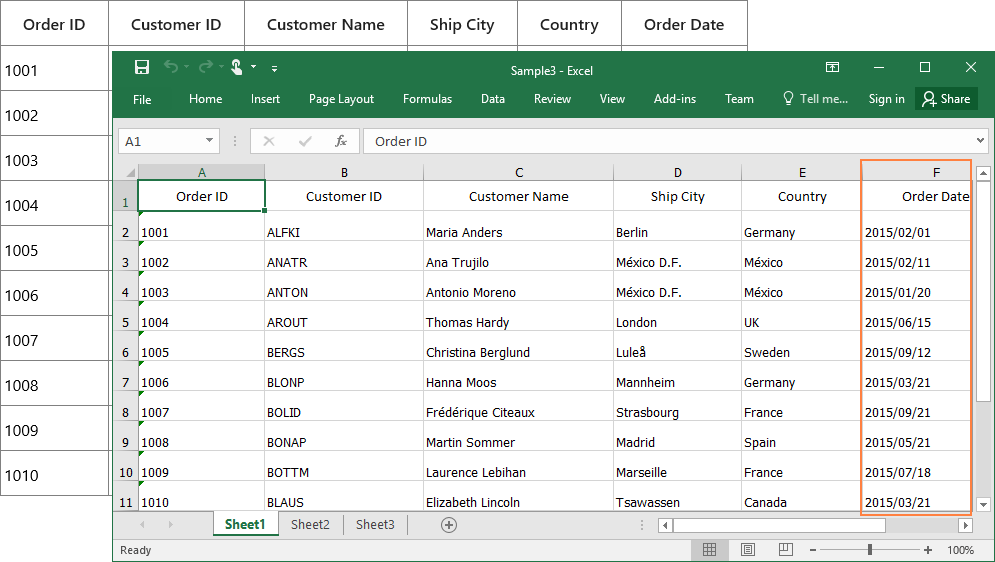Exporting Dataset to Excel in C: Simplified Guide

Exporting data from your application or database into an Excel file can significantly enhance data analysis and reporting tasks. Whether you are managing a CRM system, a data analytics platform, or just organizing personal records, the ability to export to Excel is invaluable. In this guide, we'll explore how to perform this operation using C, focusing on simplicity and efficiency for developers at all skill levels.
Understanding Excel File Formats


Before diving into the code, let’s briefly explore the common Excel file formats:
- .xls: The traditional format used by Excel 97-2003, still widely supported.
- .xlsx: Introduced with Excel 2007, this XML-based format supports more features and is recommended for modern use.
- .xlsm: Similar to .xlsx but allows macros within the workbook.
Setting Up Your Development Environment

To export data to an Excel file, you’ll need a library that can handle Excel file manipulation. Here’s how to set up:
- Install Visual Studio Community Edition.
- Download and include a library like EPPlus or Open XML SDK. Here, we’ll use EPPlus for its simplicity.
- Add references to EPPlus in your project through NuGet Package Manager:
Install-Package EPPlus
Coding Your First Export

Let’s create a simple example to export a dataset to an Excel file:
using OfficeOpenXml;
using System.IO;
class Program
{
static void Main()
{
var data = new List
{
new Person { Name = "John Doe", Age = 30, City = "New York" },
new Person { Name = "Jane Smith", Age = 25, City = "London" },
// Add more entries here
};
ExportToExcel(data);
}
static void ExportToExcel(List data)
{
using (var package = new ExcelPackage())
{
var worksheet = package.Workbook.Worksheets.Add("Sheet1");
worksheet.Cells["A1"].Value = "Name";
worksheet.Cells["B1"].Value = "Age";
worksheet.Cells["C1"].Value = "City";
for (int i = 0; i < data.Count; i++)
{
worksheet.Cells["A" + (i + 2)].Value = data[i].Name;
worksheet.Cells["B" + (i + 2)].Value = data[i].Age;
worksheet.Cells["C" + (i + 2)].Value = data[i].City;
}
var fileName = Path.Combine(Environment.CurrentDirectory, "output.xlsx");
FileInfo excelFile = new FileInfo(fileName);
package.SaveAs(excelFile);
}
Console.WriteLine("Excel file created successfully.");
}
}
class Person
{
public string Name { get; set; }
public int Age { get; set; }
public string City { get; set; }
}
🚀 Note: This code assumes you have the data in a List
Advanced Techniques for Exporting

Here are some techniques to enrich your Excel exports:
- Formatting: Apply styles like cell backgrounds, borders, and number formatting.
- Multiple Sheets: Add several worksheets to organize data differently.
- Charts: Embed charts to provide visual insights.
Error Handling and Best Practices

When dealing with file operations, ensure:
- Proper error handling to catch exceptions like file access issues.
- File paths are correctly set to avoid permission problems.
- Close resources promptly to manage system resources effectively.
⚠️ Note: Always validate the data before exporting to ensure data integrity.
Conclusion

Through this tutorial, we’ve covered the fundamental steps needed to export datasets to Excel using C#. Whether for personal use or in a professional setting, this functionality can streamline data management and reporting tasks. By following these steps, adjusting your data source, and incorporating advanced techniques, you can automate and enhance your data export processes.
What are the main differences between .xls and .xlsx files?

+
The .xls format, used by Excel up to version 2003, has limitations in terms of features and file size. The .xlsx format, introduced with Excel 2007, uses XML and supports more rows, columns, and advanced features like data validation rules, table structures, and improved data compression.
Can I use this method to export large datasets?

+
Yes, but consider performance optimizations like streaming the data to Excel or processing data in chunks to manage memory usage, especially with very large datasets.
Is EPPlus free for commercial use?

+
EPPlus is open-source and can be used in commercial projects without a license fee. However, check the current license agreement for any updates or restrictions.
How can I format cells in the exported Excel file?

+
EPPlus provides methods to set cell styles, such as number formatting, font styles, colors, and borders. You can apply these styles to individual cells or ranges within your worksheet.



